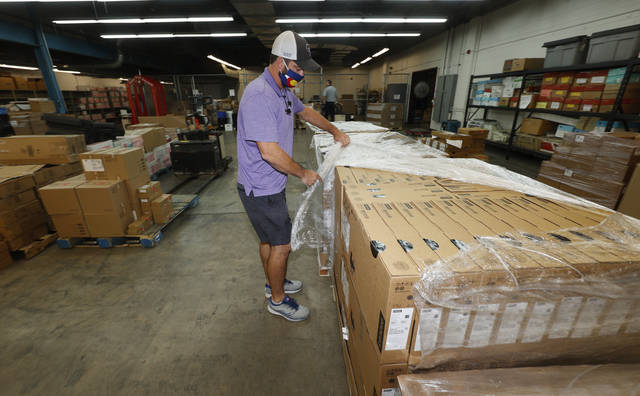Editorial: Schools need laptops — and answers
Sometimes problems are theoretical. They involve big-picture concepts and abstract ideas and a lot of what ifs and few concrete answers.
So far, 2020 has been a year filled with those, from the coronavirus pandemic and its precarious balance with the economy, plus the added challenge of widespread protests and a looming presidential election.
But sometimes the problems are smaller. More predictable. More tangible and with a lot more cause and effect.
Like laptops.
When Pennsylvania kids went home March 13 to finish the school year there, some schools had the resources to do that all digitally. Some didn’t.
That isn’t surprising. School districts frequently struggle with budgets, assets and allocation. It was just a month before the covid-19 lockdowns that Sto-Rox School District was so struggling with a paper shortage that a guidance counselor turned to Twitter to appeal for donations to get through the quizzes, homework and other needs for the rest of the year.
So it should have been easily understandable that as the pandemic continued and the new school year loomed, there would be new needs. And one of those needs was computers.
Many districts have been trying to get to a 1-to-1 ratio of devices — be they laptops or tablets — to students for a few years now. Purchasing, replacing and upgrading the equipment can be built into budgets structured over years. It can involve preplanning both for needs, such as curriculum and enrollment, and finance, using funds on hand or applying for grants.
It is rarely as simple as making a decision, grabbing a checkbook and heading to the store.
That’s why decisions should have been made sooner about how schools would open in the fall.
Gov. Tom Wolf hemmed and hawed about recommendations and guidelines but didn’t make a decision. At the same time, President Trump made his own feelings on the importance of reopening schools well known while the Centers for Disease Control and Prevention made statements and then revised them.
In the end, it was all left to the school districts to chart the course amid a shifting landscape of data and changing realities on the ground.
Where does that leave things as kids are going back to class — either in the classroom or remotely at the dining room table? For some districts, it’s without enough laptops.
Districts such as Greensburg Salem, Burrell and Allegheny Valley, as well as the Westmoreland Intermediate Unit, are trying to make do until their equipment arrives. They aren’t alone.
The nationwide need has made laptops — especially the affordable and flexible Chromebooks popular in classrooms — a hot property. According to the Associated Press, the top three manufacturers are reporting a 5 million device shortage. Pittsburgh Public Schools just delayed the start of school by a week, citing the lack of computers.
It’s hard to predict where the pandemic will lead from here. What we can predict is that schools will need time to react, to respond and to put plans into place, so we should demand that government help them by providing clear and straightforward guidance.
Remove the ads from your TribLIVE reading experience but still support the journalists who create the content with TribLIVE Ad-Free.

